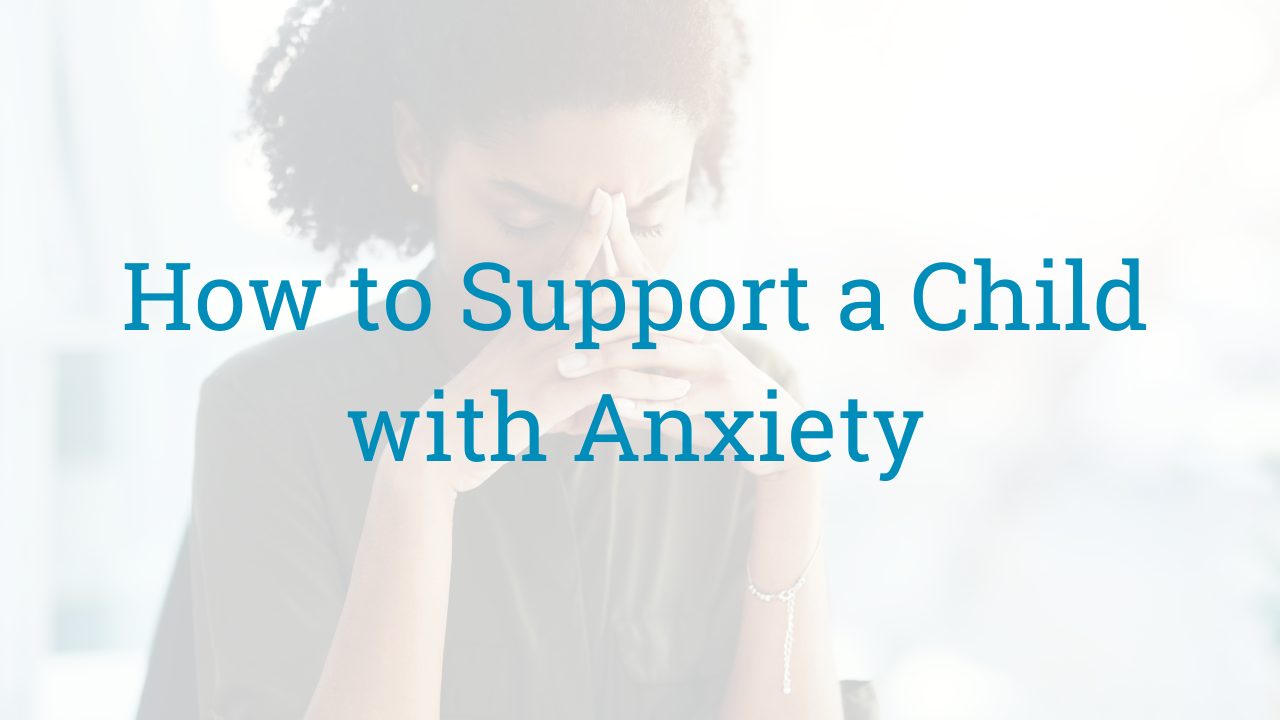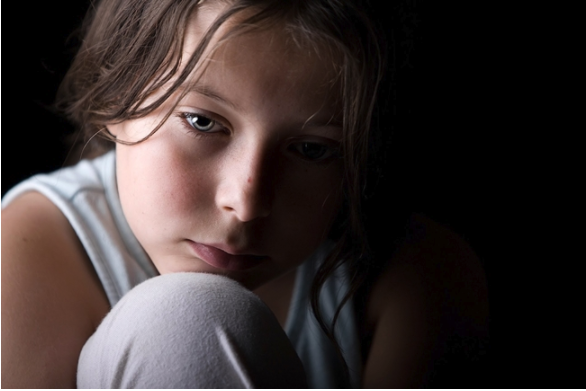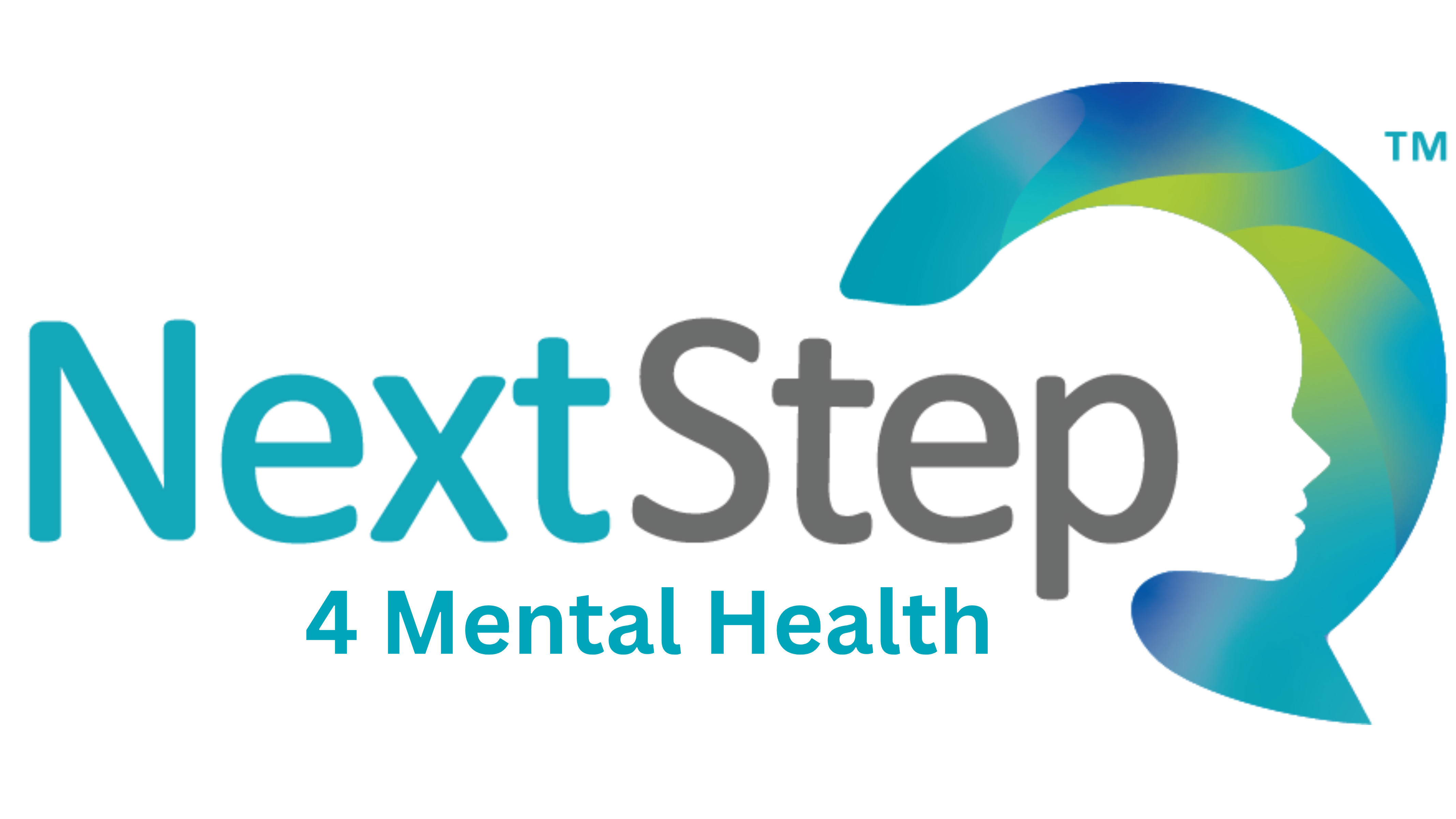
How to Support a Child Recently Diagnosed with Anxiety
When a child is diagnosed with anxiety, it can be a challenging and emotional time for both the child and their family. Understanding how to support them effectively can make a significant difference in helping them navigate their feelings and manage their anxiety.
Here are some key steps to support a child with an anxiety diagnosis:
1. Educate Yourself and Your Child
The first step in supporting your child is to educate yourself about anxiety. Understanding the condition helps reduce any fears or misconceptions, both for you and your child. Sit down with your child and explain anxiety in an age-appropriate way, using simple terms. Let them know that feeling anxious is a normal part of life and that they are not alone.
2. Create a Supportive Environment
Children with anxiety often feel overwhelmed and misunderstood. It’s important to create a safe and supportive environment at home where your child feels comfortable expressing their feelings without judgment. Encourage open communication, listen actively, and let them know that it’s okay to have anxious feelings.
3. Establish Routine and Predictability
Anxiety thrives in uncertainty. One of the most helpful things you can do is establish a consistent daily routine. Having a clear schedule for school, meals, homework, and bedtime can help your child feel more secure and in control of their environment. Routines can ease anxiety by reducing the unknowns.
4. Practice Coping Strategies Together
Teach your child coping strategies to manage their anxiety. Breathing exercises, mindfulness techniques, and progressive muscle relaxation are all effective tools. Practice these strategies together so your child can learn to use them in moments of anxiety. Over time, these tools can help them feel more in control of their emotions.
5. Encourage Healthy Habits
Physical health is deeply connected to mental well-being. Encourage your child to engage in regular physical activity, maintain a balanced diet, and get enough sleep. A healthy body can help regulate the nervous system and reduce the intensity of anxiety.
6. Seek Professional Support
While family support is crucial, working with a mental health professional can provide your child with additional tools to manage their anxiety. Here at Next Step 4 Mental Health, a mental health professional trained in child anxiety can guide your child in understanding their triggers and developing healthier thought patterns.
Cognitive-behavioral therapy (CBT) is a proven method for treating anxiety in children and can make a huge difference.
7. Be Patient and Understanding
Supporting a child with anxiety takes time and patience. Progress may be slow, and there may be setbacks, but it’s important to celebrate small victories along the way. Encourage your child to take things one step at a time, and reassure them that it’s okay to seek help when they need it.
At Next Step 4 Mental Health, we understand that each child’s experience with anxiety is unique, and we are here to help both children and families navigate this challenging journey.
If you’re looking for additional support or guidance, reach out to us today. Together, we can help your child build resilience, learn coping skills, and thrive despite anxiety.
Learn More

How to Spot the Signs of Anxiety in Kids
Anxiety is a common challenge among children, and it can often go unnoticed as kids may struggle to express their feelings. As a parent or caregiver, it’s important to know the signs so you can help your child cope with anxious feelings.
Here are some key signs of anxiety in kids to watch for:
1. Excessive Worry
Children with anxiety often worry excessively about everyday situations. They might express fear about going to school, meeting new people, or participating in activities they used to enjoy. This worry may seem disproportionate to the situation, which leads them to focus on worst-case scenarios.
2. Physical Symptoms
Anxiety often manifests physically. Your child may complain of stomachaches, headaches, or other unexplained pains, particularly before stressful events like school or social outings. They may also experience rapid breathing, dizziness, or fatigue when anxious.
3. Avoidance Behaviors
Kids who are anxious may avoid certain activities, people, or places that trigger their anxiety. This could include refusing to go to school, avoiding social interactions, or expressing fear about new experiences. These avoidance behaviors can sometimes interfere with their everyday routines.
4. Restlessness and Trouble Sleeping
Restlessness, fidgeting, or being unable to sit still can be signs of anxiety. Additionally, anxiety can disrupt your child’s sleep, causing nightmares, difficulty falling asleep, or frequent waking during the night.
Read this blog to learn how your lighting can impact your sleep.
5. Irritability and Mood Swings
Children with anxiety may become irritable or easily frustrated. Mood swings, especially in situations that would not normally be stressful, are another common sign.
How to Help Your Child
If you notice any of these signs in your child, it’s important to take action. Encouraging open conversations, validating their feelings, and teaching relaxation techniques can help. If the anxiety persists or affects their daily life, reaching out to a mental health professional can provide the support and tools needed to manage their anxiety effectively.
How Dr. Sofeia Aslam at Next Step 4 Mental Health Can Help
 Dr. Sofeia Aslam specializes in working with children and adolescents and offers a compassionate and effective approach to treating anxiety. Her expertise in child and adolescent psychiatry makes her the right fit for helping children navigate their anxiety and regain a sense of peace and confidence.
Dr. Sofeia Aslam specializes in working with children and adolescents and offers a compassionate and effective approach to treating anxiety. Her expertise in child and adolescent psychiatry makes her the right fit for helping children navigate their anxiety and regain a sense of peace and confidence.
With Dr. Aslam’s guidance, your child can learn coping strategies, develop emotional resilience, and improve their overall mental well-being. If you’re noticing signs of anxiety in your child, Dr. Aslam is here to help.
Contact Next Step 4 Mental Health today to schedule an appointment and take the first step toward supporting your child’s mental health.
Learn More
Preparing for Telehealth: What Parents Need to Know
As parents, you’ve no doubt taken your child to dentist appointments, eye doctor appointments, and annual physical exams. These routine visits are similar: arrive at the office, fill out paperwork, wait in the lobby until your name is called. But what about preparing for telehealth?
But what happens when your appointments are virtual? What do parents need to know?
Here at NextStep2MentalHealth, our multidisciplinary team is proud to offer a variety of mental health services through telehealth – and not just for adults. Children and teens can benefit from virtual care.
Below, we share five tips that parents can use to get their children ready for a virtual session.
5 Tips to Remember When Preparing for Telehealth
If your teen already uses video calling apps like FaceTime, Zoom, Google Hangouts, or Skype, then he or she already has a good idea of what a telehealth session is like. For younger children — especially those who don’t use much technology — a virtual appointment can be intimidating. Setting aside the technology, some children may feel a little nervous before an appointment, especially if they’re meeting a new provider for the first time. They may wonder what happens in therapy or what happens during an evaluation.
If your child is scheduled for an upcoming virtual appointment, it’s a good idea to prepare your child ahead of time — especially if it’s their first time experiencing therapy or an evaluation.
1. Know what type of session your child is having

At Next Step 2 Mental Health, your child can receive a variety of services remotely. This includes therapy, coaching, new patient appointments, and more.
When you know what type of service your child is receiving, it’s easier to answer their questions.
Reminder: Virtual sessions are only for non-life-threatening visits. If your child is experiencing a mental health emergency, call 9-1-1 or head to the nearest emergency room. You may also use the new 24/7 crisis hotline by calling 988 for those in crisis.
2. Gather important information before the session starts
Before your appointment begins, make sure you have:
- A list of your children’s current medications
- Your child’s medical history, including allergies, weight, and any previous diagnoses
- A list of questions that your child has (if any)
- A list of questions that you have (if any)
Depending on what type of session your child is having, you might want to write down a list of concerning symptoms that you want to address. Be prepared to answer a variety of questions, including how the symptoms have been occurring, when the symptoms are most severe, and any other related details.
3. Find the perfect location

This is one of the most important steps to having a successful telehealth session. The ideal location is quiet, well-lit, and free from distractions. Consider setting up on the dining room table or in a den. The camera should be at eye-level for your child.
If you have pets or other children, make sure they are situated elsewhere so you can focus on the session too.
It’s also important that no other children or family members can listen in during your child’s session. It’s important your child has privacy during their call.
4. Start with an introduction
You might have a telehealth session with a therapist or pediatrician that you’ve seen dozens of times. But if your child is seeing a new provider, you’ll start with introductions. Let your child know ahead of time if he’ll be meeting a new doctor so he can prepare mentally for the meeting. During the meeting, one of our providers will start by sharing his or her name and title. At this time, encourage your child to introduce himself too! After your child introduces himself, you’ll be asked to confirm a few details too. You’ll already have completed a treatment consent form, but you’ll still confirm your child’s name, date of birth, etc.
Tip: If your child is nervous (which is normal!), practice introductions beforehand!
5. Know your next steps
Before your child’s virtual appointment comes to an end, make sure that you understand the provider’s diagnosis, instructions, and/or advice.
Tip: Keep a piece of paper or notepad nearby so you can take notes during the session, if needed. Don’t hesitate to ask for clarification! We want to make sure your session is valuable and helpful.
Questions? We’re Just a Call or Click Away
At NextStep2MentalHealth, we’re happy to provide comprehensive psychiatric care and therapy for your children. Whether your child has anxiety, depression, or ADHD, we don’t want him or her to miss out on valuable sessions, and we are here to make sure your telehealth experience is successful.
Questions about preparing for telehealth? We’re just a call or click away. Give our Louisville, Kentucky mental health clinic a call at 502-907-5908 or request an appointment here.
Learn More
Does Your Child Have Separation Anxiety?
Separation anxiety tends to appear in infants around the age of 6-10 months. This is around the age when babies start to be more aware of their surroundings, and that includes when their parents are present — or not. Most toddlers outgrow this, but for some children with anxiety, separation anxiety can continue on well into the elementary school years.
In this blog, we explore the signs of separation anxiety and tips for helping your child feel better.
Signs Your Child Is Dealing with Separation Anxiety
![]()
![]() According to the DSM–IV–TR, separation anxiety is defined as:
According to the DSM–IV–TR, separation anxiety is defined as:
“An anxiety disorder occurring in childhood or adolescence that is characterized by developmentally inappropriate, persistent, and excessive anxiety about separation from the home or from major attachment figures. Other features may include marked anticipatory anxiety over upcoming separation and persistent and excessive worry about harm coming to attachment figures or about major events that might lead to separation from them (e.g., getting lost).”
Red flags of separation anxiety in kids include:
- Refusing to go to school
- Fear of being alone
- Fear of going to bed alone (without you)
- Nightmares
- Physical symptoms, including vomiting, headaches, nausea, stomach pain)
In addition, the DSM–5 also notes that the symptoms must be present for at least 4 weeks in children before a diagnosis can be reached. Adults can also be diagnosed with separation anxiety, but their symptoms must be present for at least 6 months.
Top Tips on How to Ease Your Child’s Separation Anxiety
 Use transitional objects
Use transitional objects
Transitional items help your child feel safe because they are a symbol of you. Your child connects the object to you and can feel reassurance. Examples of transitional objects include:
- A locket with a picture of you or your family (certain sellers on Etsy can also engrave special messages on lockets)
- Favorite blanket (spritzed with calming essential oils for extra calm vibes)
- A stuffed toy (with a recording of your voice)
Older children may not like a soft blanket or stuffed toy, but hand-written notes, a shared sweatshirt, or a locket can be beneficial for older children.
Acknowledge your child’s fear but stay positive
It’s good to acknowledge your child’s fears, but it’s equally important to continue to talk in a positive, calm manner. If your child senses that you are worried/fearful, it can add to his or her fears. Children easily pick up your own emotions, and it can impact their reactions too. Let your child know what will happen when you are gone, whether that’s an out-of-town work trip, a regular day at the office, or a quick trip to the grocery store.
Create a short and sweet goodbye ritual
Whether you’re dropping off your child at daycare, school, or the sitter’s house, it’s important to say goodbye. Skipping out without a proper goodbye can compound your child’s fears. That being said, goodbyes that very long can also prolong the transition and the lingering anxiety.
The best solution is a short and sweet goodbye. Examples include:
- A special handshake
- Butterfly kisses
- A hug and a special phrase (example: I love to the moon and back)
The Bottom Line
While some anxiety is normal when saying goodbye, untreated separation anxiety (or another type of anxiety disorder) can impact your child’s ability to function at home or school. If you spot the signs of age-inappropriate clinginess, tantrums, withdrawal from family or friends, preoccupation with intense guilt, refusal to go to school, excessive fear of leaving the house, or stomach pains/nausea, your child might benefit from an anxiety evaluation.
The good news is that separation anxiety, like all anxiety disorders, can be treated. Common treatments for anxiety include talk therapy, play therapy, counseling for the family, and in some cases, medication. Your therapist can also recommend the right lifestyle changes (such as changing up your goodbye ritual or making a locket) that can help your child.
NextStep2MentalHealth provides adolescent (and adult) mental health care, and our multidisciplinary team is dedicated to helping parents and their children with their mental health needs. Call us for an appointment or simply use our online scheduling tool.

Depression in Children and Adolescents
Children and adolescents be affected by depression. It is less commonly diagnosed than with adults, it is important to recognize the signs and symptoms.
Learn More
Choosing a medical professional to evaluate for ADHD?
It is very important that treatment options be discussed with a professional who is well informed about the significant, life-long consequences of…
Learn MoreAdoption and Loss
All orphaned children have experienced traumatic loss on some level. When dealing with and trying to understand loss, it is essential for parents and caregivers of kids from “hard places” (i.e., kids who have experienced neglect, abuse, trauma) to understand the psycho-social issues associated with the loss of a parent or caregiver. It is common for kids who have experienced traumatic loss to be sad and confused. Kids may be angry. They may hit, kick, and bite. Kids from “hard places” may lie, not listen and may have problems learning. They may scream, and they might run away. Kids from “hard places” might attempt to harm caregivers, parents, siblings, or themselves. All of these emotions and behaviors will be at a level far more intense than what is expected from normal child development. And, all of these emotions and behaviors will manifest themselves differently in different children, at different ages and stages. Parents must be prepared for these realities. Parents must be informed.
Learn More